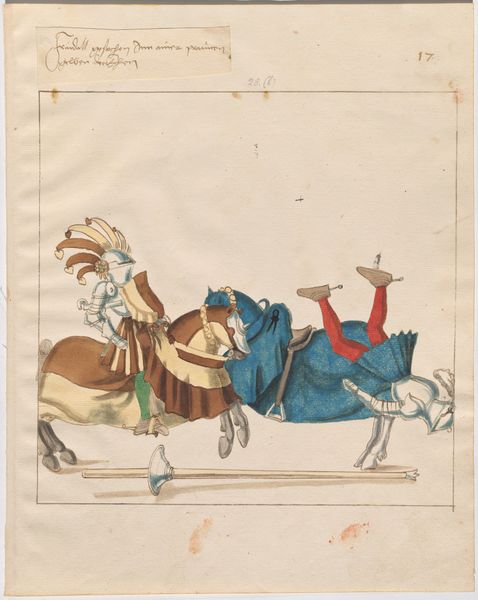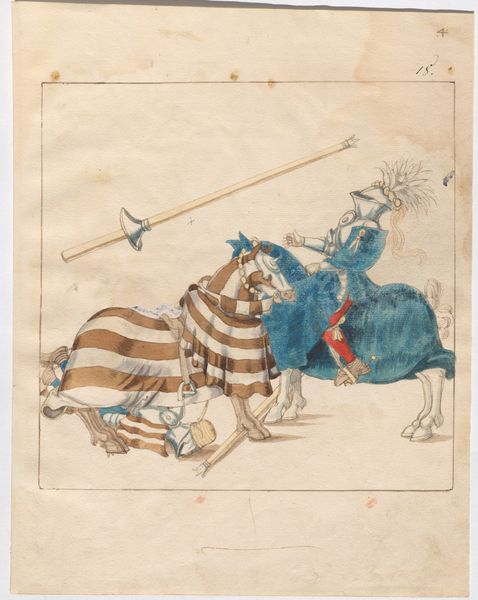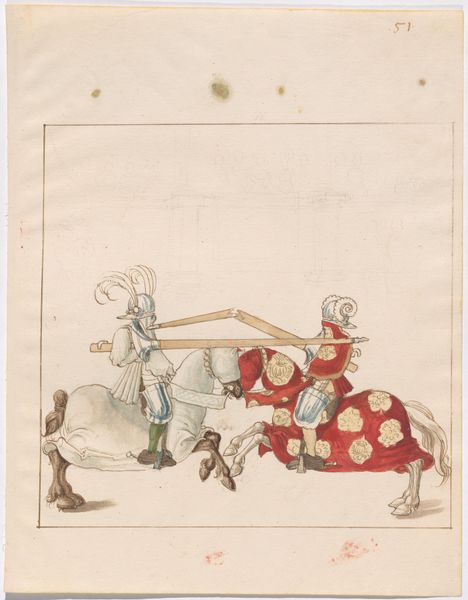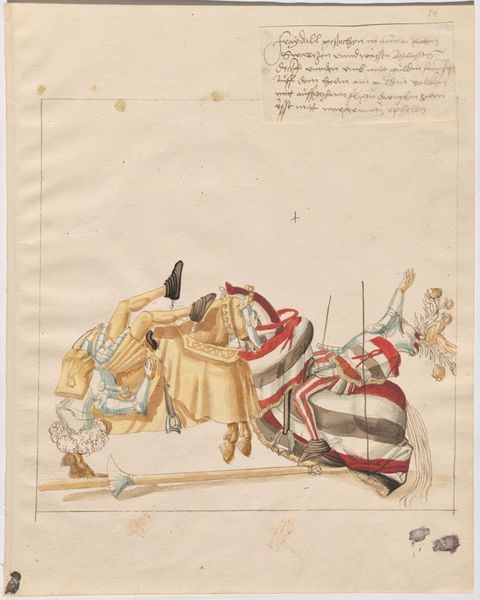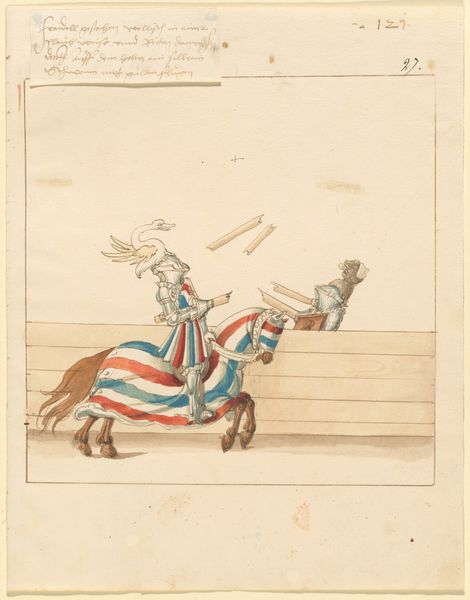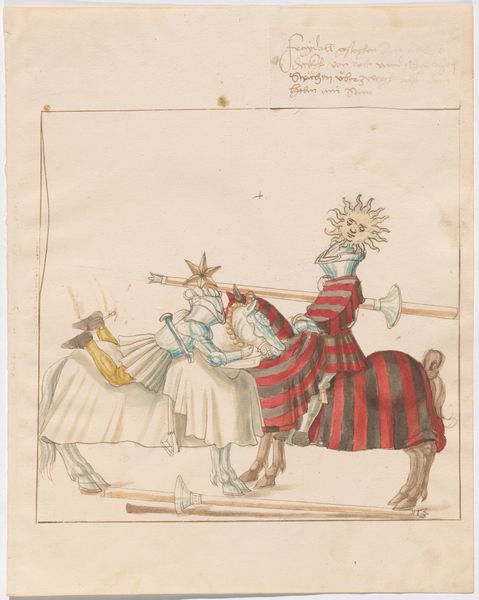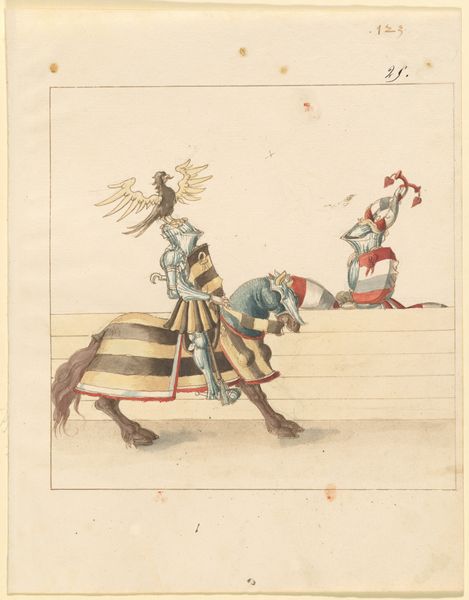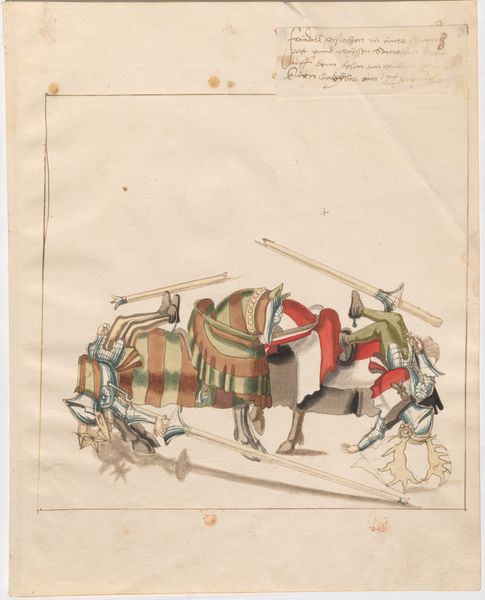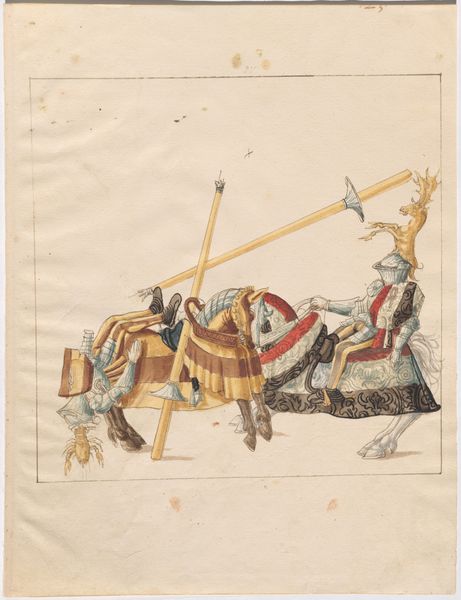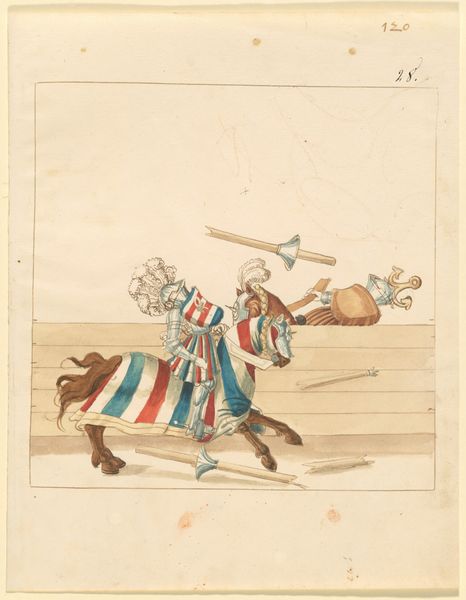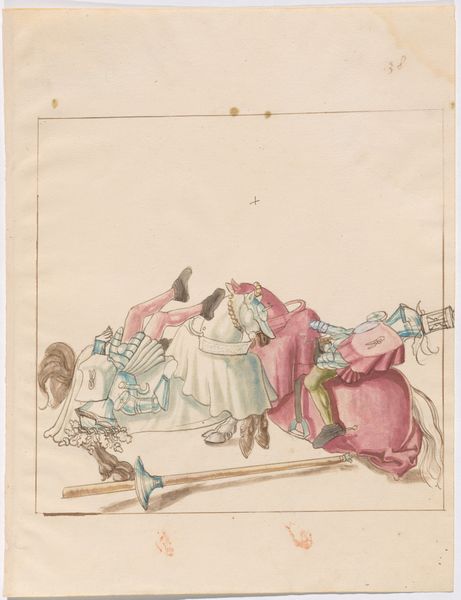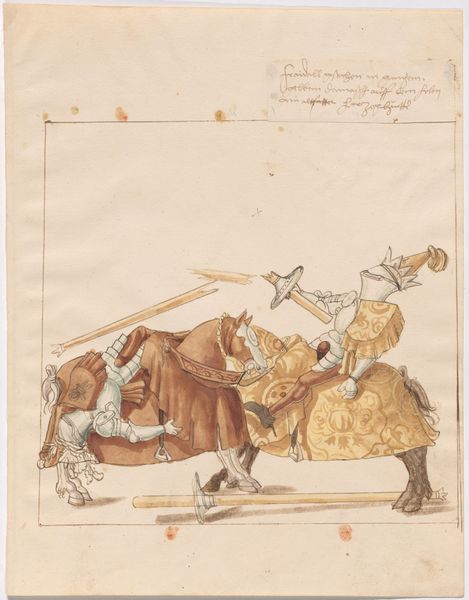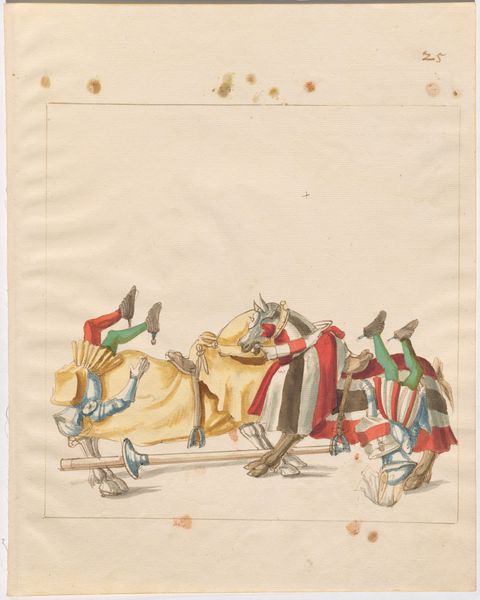
drawing, coloured-pencil, watercolor
#
drawing
#
coloured-pencil
#
medieval
#
water colours
#
narrative-art
#
figuration
#
watercolor
#
coloured pencil
#
history-painting
#
northern-renaissance
Dimensions: sheet: 33.2 × 26 cm (13 1/16 × 10 1/4 in.)
Copyright: National Gallery of Art: CC0 1.0
Curator: This work is titled "German Joust of Peace," and dates back to circa 1512-1515. We attribute it to an anonymous artist from the Northern Renaissance. The media involves watercolor and colored pencil. Editor: The immediacy of the scene is striking—a knight unhorsed, his striped armour reflecting the light in an almost comedic manner. The bright red contrasts so sharply with the overturned knight. What exactly signifies "peace" here? Curator: Indeed, that stark contrast is quite arresting. In terms of form, the composition neatly divides into the upright victorious knight and the prone figure, creating a clear visual hierarchy and symbolic suggestion that order and control will always defeat imbalance and chaos. It’s the very *idea* of peace, as expressed through ordered combat. Editor: But look closely at the craft—the artist's choices in representing armour. This isn't about precise metallurgical depiction. Notice how the materials suggest something of the performative nature of jousting. These colours and striped designs speak to pageantry. What labour went into both the artistic depiction and the production of the materials we see represented? It challenges traditional notions of 'high art', doesn't it? Curator: Precisely! And that tension—between meticulous detailing in some areas, such as the horses' tack and the knight's armour, and the flatter treatment of other elements—amplifies the drama, no? Editor: In this rendering, notice that the knight remains almost unaffected—materials signify rank and privilege. But I see beyond nobility. This work suggests a cultural preoccupation with display and perhaps even wasteful competition. Curator: Wasteful or aspirational? The symbolism hinges, of course, on one's reading of colour and form, and, yes, what materials and processes make those symbolic representations possible. Thank you for underlining this reading of colour, Editor; very valuable. Editor: Thank you, Curator. Analyzing it has changed my initial view greatly.
Comments
No comments
Be the first to comment and join the conversation on the ultimate creative platform.
